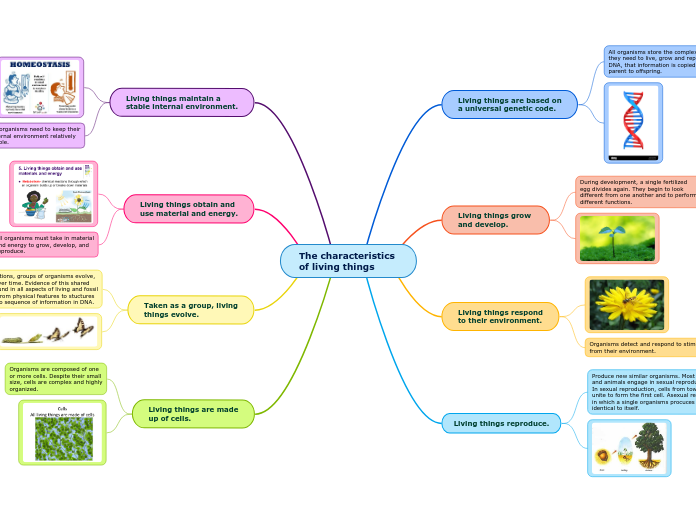The characteristics
of living things
Living things are based on
a universal genetic code.
All organisms store the complex information
they need to live, grow and reproduce. It's called
DNA, that information is copied and passed from
parent to offspring.

Living things grow
and develop.
During development, a single fertilized
egg divides again. They begin to look
different from one another and to perform
different functions.

Living things respond
to their environment.

Organisms detect and respond to stimuli
from their environment.
Living things reproduce.
Produce new similar organisms. Most plants
and animals engage in sexual reproduction.
In sexual reproduction, cells from tow parents
unite to form the first cell. Asexual reproduction,
in which a single organisms procuces offspring
identical to itself.

Living things maintain a
stable internal environment.

All organisms need to keep their
internal environment relatively
stable.
Living things obtain and
use material and energy.

All organisms must take in material
and energy to grow, develop, and
reproduce.
Taken as a group, living
things evolve.
Over generetions, groups of organisms evolve,
or change over time. Evidence of this shared
history is found in all aspects of living and fossil
organisms, from physical features to stuctures
of proteins to sequence of information in DNA.

Living things are made
up of cells.
Organisms are composed of one
or more cells. Despite their small
size, cells are complex and highly
organized.

